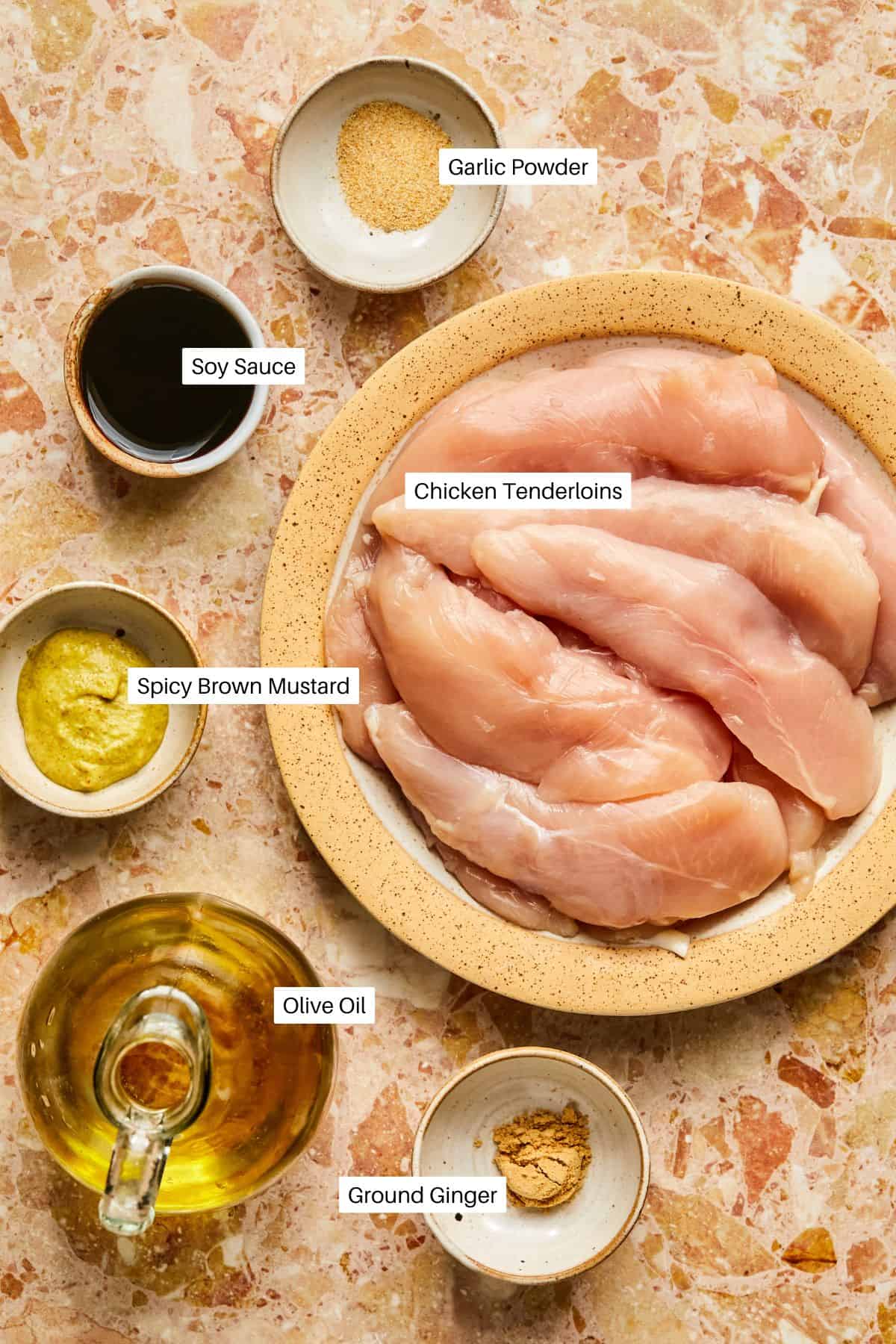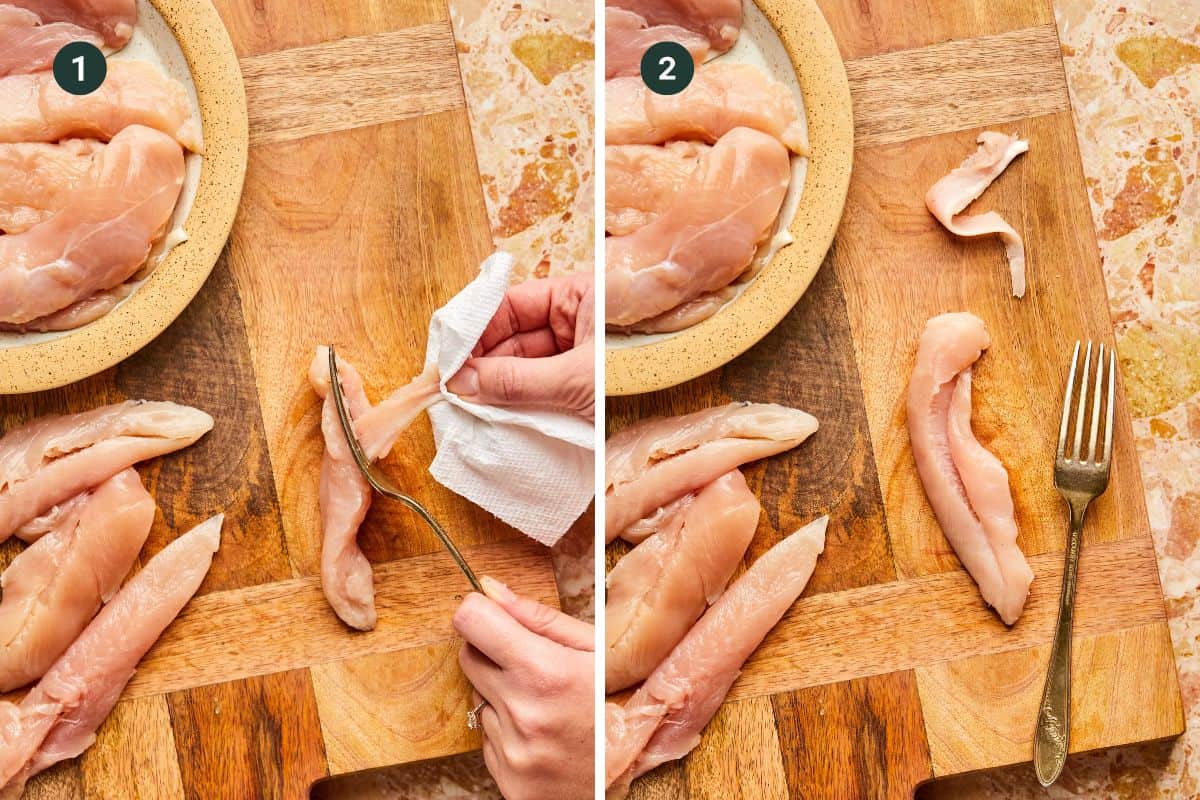Are you tired of serving up bland, boring chicken tenders that nobody gets excited about? I’ve been there too! After years of experimenting in my kitchen, I’ve discovered that the secret to irresistible chicken tenders isn’t complicated cooking techniques – it’s all about the seasoning!
Chicken tenders are the perfect blank canvas for creating flavor magic. Their mild taste and tender texture make them ideal for absorbing whatever delicious seasonings you throw their way. Whether you’re cooking for picky kids or impressing dinner guests, properly seasoned chicken tenders can become your signature dish.
In this comprehensive guide, I’ll share everything I’ve learned about transforming ordinary chicken tenders into extraordinary flavor bombs. Let’s dive in!
Understanding Chicken Tenders
Before we jump into seasoning, let’s clarify what chicken tenders actually are Many people think they’re just thin strips of chicken breast, but there’s more to it!
Chicken tenders (also called chicken mini fillets in the UK) are a specific cut found underneath the chicken breast. They’re the most tender part of the chicken breast, and each chicken has two of them. They’re naturally moist and tender when cooked properly.
You can buy chicken tenders separately at most supermarkets, or you can use boneless skinless chicken breasts cut into thin strips as a substitute
The Importance of Proper Seasoning
Why is seasoning so crucial for chicken tenders? Here’s why you shouldn’t skip this step:
- Enhances natural flavors – Chicken can be bland on its own; the right seasoning brings out its natural goodness
- Adds texture – A flavorful crust creates wonderful mouthfeel
- Allows customization – Change up flavors daily to keep meals exciting
- Introduces complexity – Layering spices creates a symphony of flavors
- Improves juiciness – Salt helps meat retain moisture
- Provides aroma – Spices release enticing fragrances that make your mouth water
Salt: The MVP of Chicken Tender Seasoning
Salt isn’t just another seasoning – it’s the foundation of flavor! Here’s why salt deserves star treatment:
- Enhances flavor – Salt makes natural flavors pop while reducing bitterness
- Tenderizes meat – It breaks down muscle proteins, helping the chicken retain moisture
- Creates crust – During cooking, salt helps form a deliciously savory exterior
- Aids digestion – It stimulates digestive juices
For best results, use kosher or sea salt rather than table salt. Their larger crystals distribute more evenly. Try to season the chicken about 30 minutes before cooking to allow the salt to penetrate the meat.
The Essential Spice Rack for Chicken Tenders
Having these core spices on hand will make seasoning chicken tenders a breeze:
- Salt – Kosher salt is preferred for its texture and consistent salinity
- Black Pepper – Adds depth and mild spice (freshly ground is best!)
- Garlic Powder – Provides a savory base note
- Onion Powder – Offers a slightly sweet savory flavor
- Paprika – Regular paprika adds color, while smoked paprika adds smokiness
- Italian Seasoning – A versatile herb blend
- Chili Powder – Adds warmth and complexity
With just these basics, you can create countless delicious combinations!
Winning Seasoning Combinations
Ready for some inspiration? These tried-and-true blends will take your chicken tenders to the next level:
1. Classic Garlic Butter
This is my family’s favorite and super simple to make! As seen in the Little Sunny Kitchen recipe:
- 1/2 tsp salt
- 1/4 tsp ground black pepper
- 2 tsp paprika
- 4 cloves minced garlic
- 1 tsp Italian seasoning
- 2 tbsp butter
2. Smoky BBQ
Perfect for grilling:
- Salt and black pepper
- Garlic powder
- Onion powder
- Smoked paprika
- Brown sugar (just a pinch)
3. Lemon Herb
Bright and fresh:
- Salt and pepper
- Lemon zest
- Dried thyme
- Dried oregano
- Garlic powder
4. Spicy Kick
For heat lovers:
- Salt and pepper
- Garlic powder
- Cayenne pepper
- Chili powder
- Smoked paprika
5. Everything Bagel
Unique and addictive:
- Toasted sesame seeds
- Poppy seeds
- Dried garlic
- Dried onion
- Salt
Application Techniques: When and How
How you apply seasoning affects flavor penetration. Try these techniques:
Dry Rub
- When: Apply up to 24 hours before cooking
- How: Massage thoroughly into all surfaces
- Why: Allows time for flavors to penetrate the meat
Marinade
- When: Marinate for 30 minutes to 2 hours (not longer!)
- How: Submerge chicken fully in marinade
- Why: Tenderizes and infuses flavor
Halfway Seasoning
- When: Sprinkle halfway through cooking
- How: Season both sides liberally
- Why: Creates an extra flavorful crust
Finishing Touch
- When: Season immediately after cooking
- How: Sprinkle while chicken is still hot
- Why: Seals in flavor and juices
Step-by-Step: Garlic Butter Chicken Tenders Recipe
Let me share my go-to recipe that’s ready in just 15 minutes! This is based on the Little Sunny Kitchen recipe that my family requests weekly:
Ingredients:
- 1 pound chicken tenderloins
- 1 tablespoon olive oil
- 2 tablespoons butter (divided)
- 2 teaspoons paprika
- 1/2 teaspoon salt
- 1/4 teaspoon black pepper
- 4 cloves garlic (minced)
- 1 teaspoon Italian seasoning
- Fresh parsley for garnish (optional)
Instructions:
- Heat olive oil and 1 tablespoon butter in a skillet over medium heat
- Add chicken tenders and season with paprika, salt, and pepper
- Cook for 3 minutes on each side, seasoning both sides
- Make room in the pan, add remaining butter and garlic
- Cook garlic for 30 seconds until fragrant (don’t burn it!)
- Add Italian seasoning and cook for one more minute
- Add 2 tablespoons water to deglaze the pan (this is where the flavor is!)
- Garnish with fresh parsley and serve
Pro Tips for Perfect Chicken Tenders
After years of making chicken tenders, I’ve learned a few tricks:
- Don’t overcook the garlic – It burns quickly and tastes bitter
- Don’t overcook the chicken – Tenders cook fast! They’re done at 165°F
- Deglaze the pan – Those brown bits have tons of flavor
- Let rest – Give the chicken 5 minutes to rest after cooking
- Use fresh spices – Replace spices that have lost their aroma
- Be generous – Don’t be shy with the seasoning!
Cooking Methods for Chicken Tenders
Seasoning works with any cooking method. Here are the most popular:
Skillet/Stovetop
Quick and easy with great flavor development. Perfect for the garlic butter recipe above!
Oven-Baked
For a healthier option without breading:
- Dredge chicken in melted butter
- Season generously on both sides
- Bake at 425°F for 15-20 minutes until internal temp reaches 165°F
Air Fryer
Super crispy results:
- Season chicken as desired
- Spray air fryer basket with oil
- Cook at 400°F for 7-9 minutes, flipping halfway
Grilling
For smoky perfection:
- Dry brine with salt for 30 minutes
- Preheat grill to 400-450°F
- Oil grates to prevent sticking
- Grill 3-4 minutes per side until 165°F internally
FAQs About Seasoning Chicken Tenders
Q: Can I use chicken breasts instead of tenders?
A: Yes! Just slice boneless skinless chicken breasts into thin strips.
Q: How long should I marinate chicken tenders?
A: 30 minutes to 2 hours is ideal. Too long makes them mushy.
Q: Can I use fresh herbs instead of dried?
A: Absolutely! Use about 3 times more fresh than dried.
Q: My seasoned tenders still taste bland. Why?
A: You might need more salt, or try letting the seasoning sit on the chicken longer before cooking.
Q: Do I need to remove the white tendon from chicken tenders?
A: It’s optional but recommended for better texture.
Q: Is it safe to reuse marinade?
A: No! Never reuse marinade that’s touched raw chicken unless you boil it first.
What to Serve with Seasoned Chicken Tenders
Complete your meal with these perfect pairings:
- Garlic butter pasta
- Homemade coleslaw
- Oven-baked french fries
- Red potato salad
- Caesar salad
And don’t forget the dipping sauces! Try honey mustard, BBQ sauce, ranch, or my personal favorite – Chick-fil-A sauce.
Final Thoughts
Seasoning chicken tenders doesn’t have to be complicated. With just a few basic spices and the right techniques, you can create restaurant-quality chicken at home.
Remember, the most important thing is to not be afraid to experiment! Start with these tried-and-true combinations, then create your own signature blend. Your family will think you’re a culinary genius.
What’s your favorite way to season chicken tenders? I’d love to hear about your creations in the comments below!
Now go forth and season those tenders like a pro! Your taste buds will thank you.

Why you’ll love this recipe:
- 39g of protein.
- Only a few simple ingredients.
- Quick way to feed the family a healthy dinner.
These are the main ingredients and substitutions. See the recipe card below for the full ingredients list and instructions for this chicken tenderloin recipe.

- Chicken Tenderloins: or chicken breasts, cutlets or chicken thighs. Cooking time will be longer for chicken breasts as they’ll be much thicker.
- Soy Sauce: or coconut aminos.
- Olive Oil: vegetable oil or avocado oil.
- Spicy Brown Mustard: gives the tenders a little kick and tons of flavor.
- Add cayenne pepper or red pepper flakes for some heat.
- For something more like chicken fingers are chicken nuggets that are coated in panko breadcrumbs, try air fryer chicken patties.
- For air fryer chicken tenders, preheat air fryer to 400 degrees F. Arrange in a single layer and cook for 5-6 minutes on each side.
- Try my crispy baked chicken cutlets for a breaded version.
- For gluten-free, use coconut aminos instead of soy sauce.
- This recipe is dairy-free, as is.
Let’s make this easy chicken recipe:
Remove the tendon from the tenderloin by grabbing it with a paper towel ( 1) and placing it between the tines of a fork and pulling down until it slides out and leaves the meat ( 2).

Place the tenderloins in a sealable airtight container and add the soy sauce, olive oil, spicy brown mustard, garlic powder and ground ginger ( 3). Put the lid on and shake so everything is evenly covered ( 4). Let set overnight OR just be sure to let it marinate while you preheat the oven.

